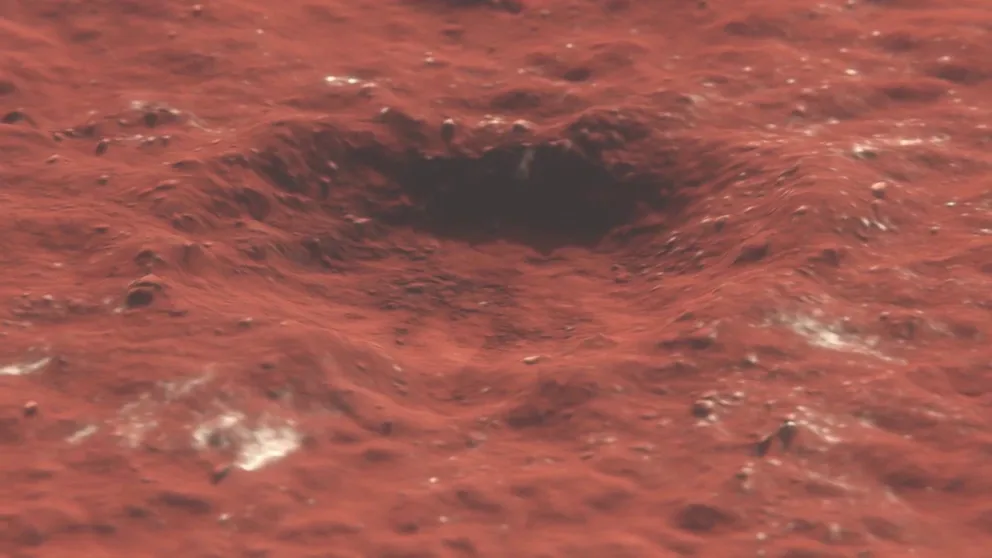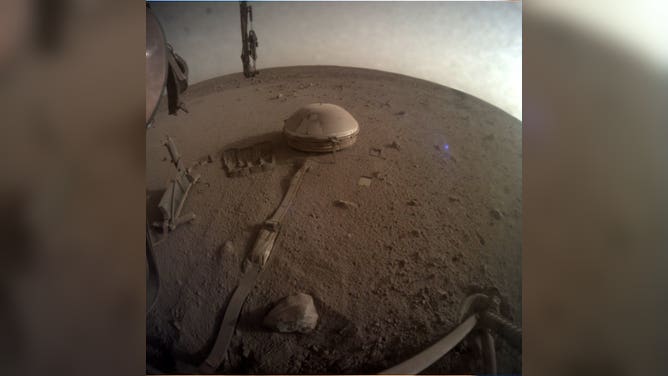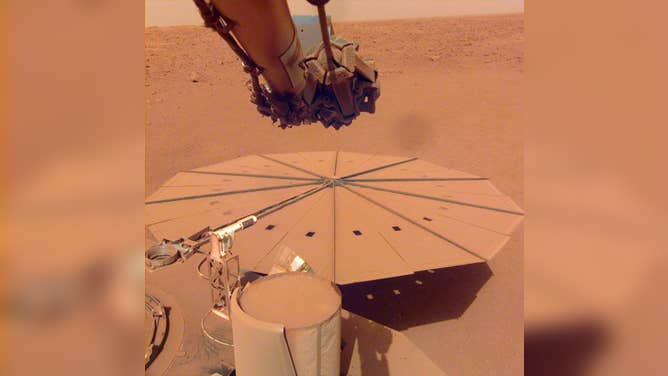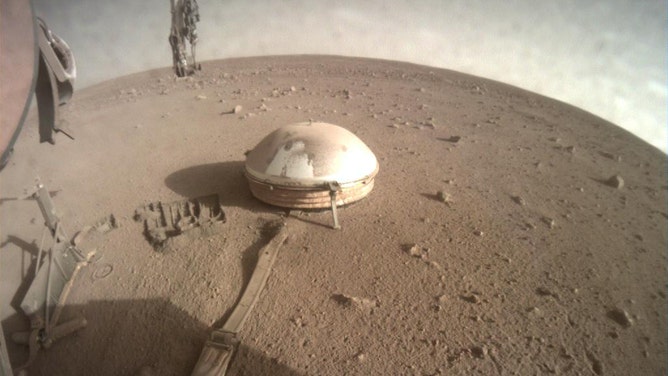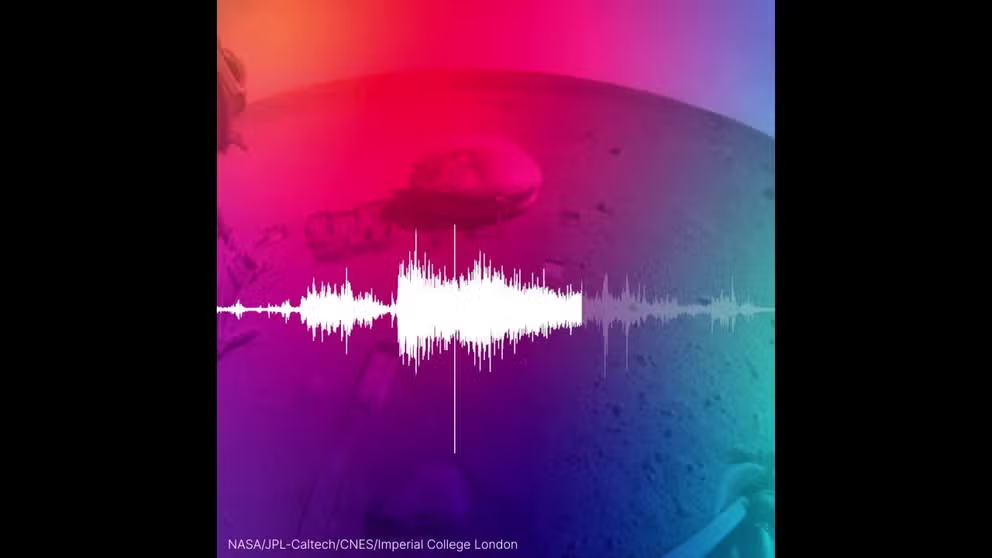Strongest quake on Mars has shocked scientists: Here's why
After reviewing images from spacecraft orbiting Mars from multiple different space agencies, the research team said they could not find evidence of a blast zone or crater that would suggest a recent meteor impact.
Flyover of Mars impact from a meteoroid
File video: This animation depicts a flyover of a meteoroid impact crater on Mars that’s surrounded by boulder-size chunks of ice. The animation was created using data from the High-Resolution Imaging Science Experiment (HiRISE) camera aboard NASA’s Mars Reconnaissance Orbiter. (NASA/JPL-Caltech/University of Arizona)
The largest Marsquake detected by NASA's Mars Insight mission was likely caused by tectonic activity and not a meteor impact like many tremors on the Red Plant, according to a new study.
Even in retirement NASA's Mars Insight mission continues to reveal fascinating details about the seismic activity on the Red Planet. After detecting Marsquakes and listening for dust devils for four years, NASA's robotic seismologist stopped operating in December 2022.
The authors behind a new study published in the Geophysical Research Letters sought to determine the cause of the magnitude 4.7 Marsquake recorded by Insight on May 4, 2022, the largest quake detected by the lander throughout its mission on Mars. NASA initially estimated the quake to be an estimated magnitude 5 temblor.
Marsquakes are like the tremors on Earth and can be created by tectonic activity or impacts on the planet.
LISTEN TO A MARTIAN DUST DEVIL: THE FIRST RECORDING EVER COULD BE THE KEY TO FUTURE MISSIONS
The study authors said the seismic event resembled others associated with fresh craters on Mars from meteor impacts. However, after reviewing images from spacecraft orbiting Mars from multiple different space agencies, the research team said they could not find evidence of a blast zone or crater that would suggest a recent meteor impact.
Scientists concluded with high confidence a meteoroid impact event did not cause the quake but was consistent with a subsurface tectonic source.
Insight's instruments detected signals from previous meteoroid strikes, like the recording below.
LISTEN: Mars Insight lander records meteor crashing into Red Planet
This video includes a seismogram and sonification of the signals recorded by NASA’s InSight Mars lander, which detected a giant meteoroid strike on Dec. 24, 2021, the 1,094th Martian day, or sol, of the mission. (Credits: NASA/JPL-Caltech/CNES/Imperial College London.)
This is unusual for Mars for two reasons: most strong seismic activity detected by Insight was from an impact on the Red Planet. Also, the study authors noted the tectonic conditions with the epicentral ellipse are very different from where the strongest tectonic Marsquakes have occurred previously in the Cerberus Fosse region on Mars.
'CONTINENT-SIZE' DUST STORM TAKES OUT NASA'S SEISMIC STATION ON MARS
Researchers continue to analyze the data, but the initial study suggests the cause was a dip-slip fault in the mid-crust originating from between 11 and 17 miles in depth.
During its four years on Mars, NASA said InSight's seismometer detected more than 1,300 quakes.
